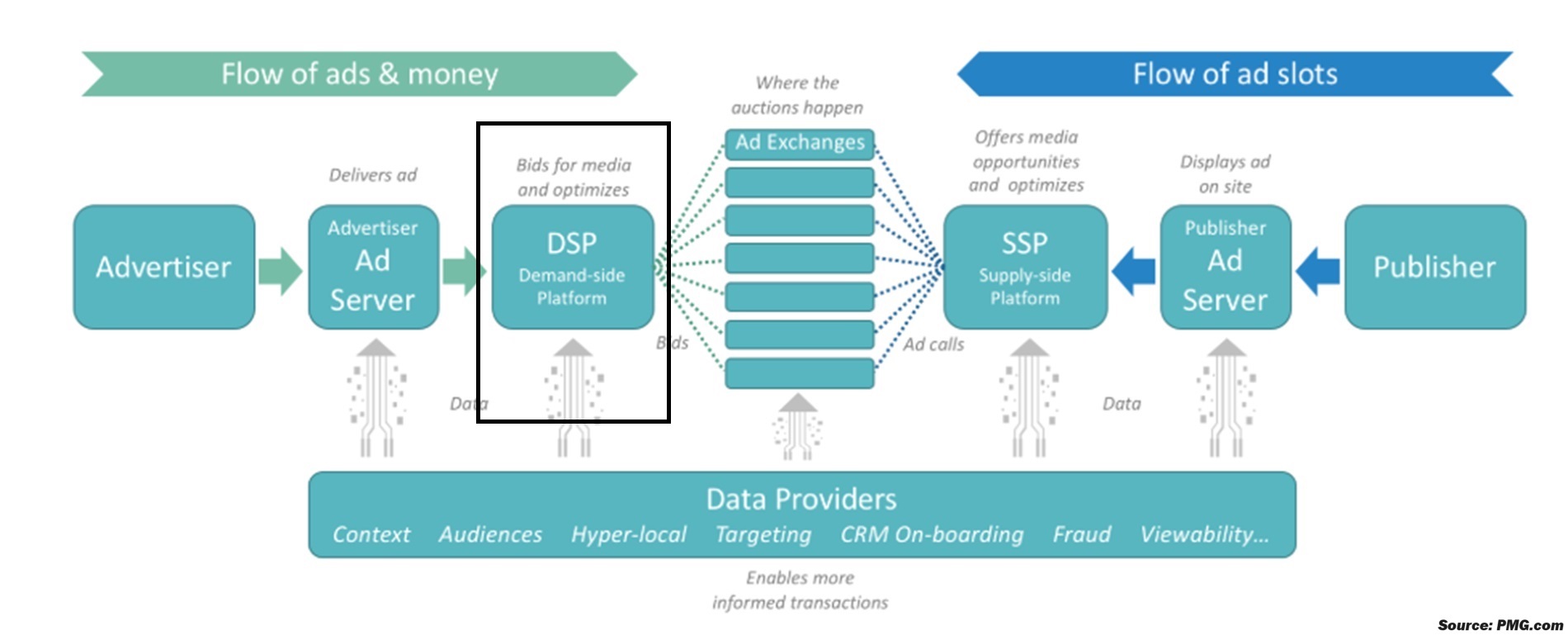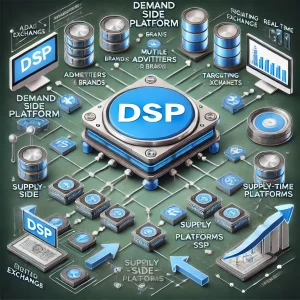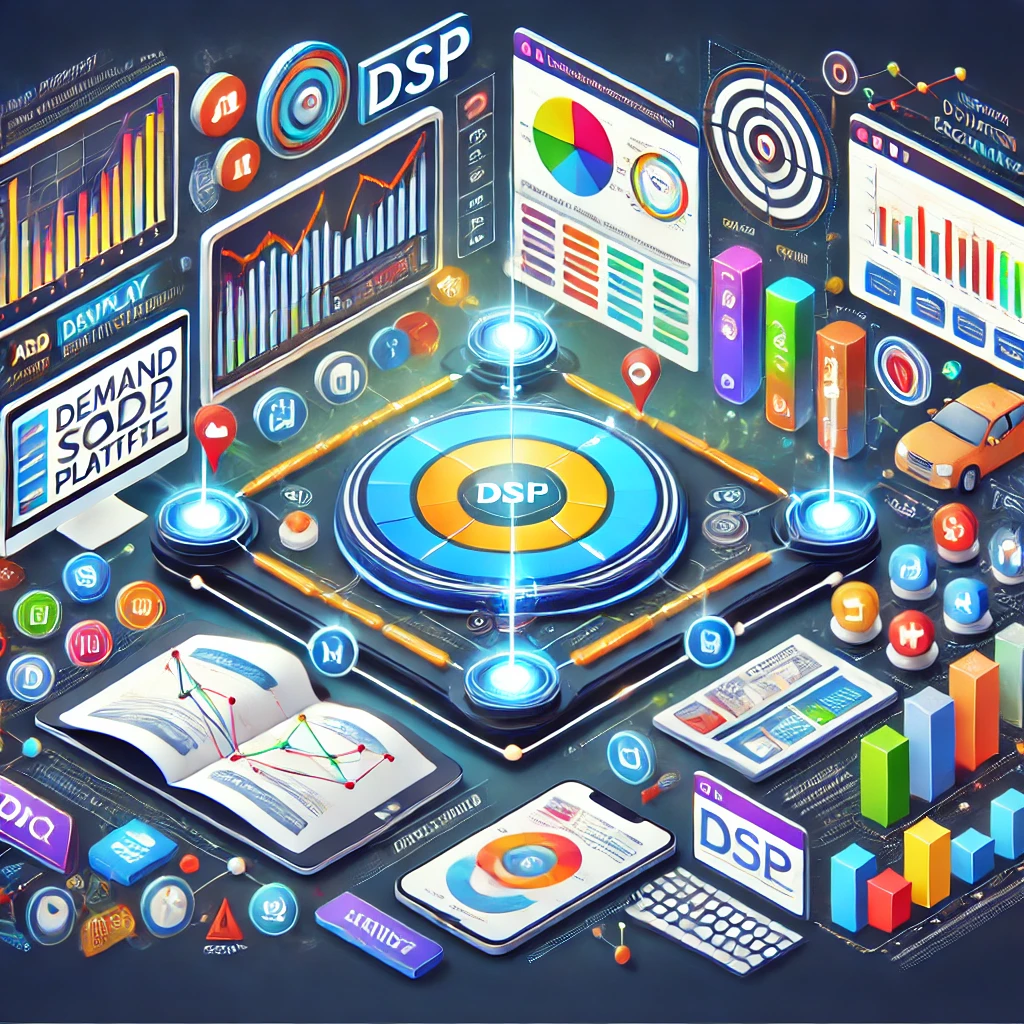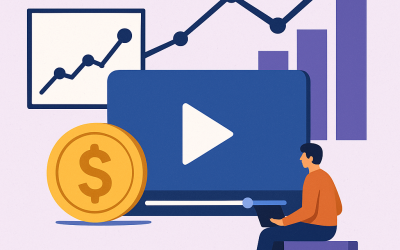A Deep Dive into Demand-Side Platforms (DSPs)
Unlike traditional methods that involve direct negotiations and manual placement of ads, programmatic advertising uses automated systems to buy and sell ad space in real-time.
At the heart of programmatic advertising are Demand-Side Platforms (DSPs). These platforms are crucial for automating and optimizing the purchase of digital ad inventory. This automation makes the ad buying process more efficient, allowing advertisers to reach their target audiences with precision.
On this post, we will talk about DSPs and its role in the Ad Monetization ecosystem!
[ez-toc]
Contents
What is a Demand-Side Platform (DSP)?
Continuing on our Deep Dive into Demand-Side Platforms, A Demand-Side Platform (DSP) is a software platform that allows advertisers to buy digital advertising inventory from multiple ad exchanges and supply-side platforms (SSPs) through a single interface. Essentially, DSPs act as a central hub where advertisers can manage their ad campaigns, bid on ad impressions, and monitor campaign performance.
The primary functions of a DSP include:
-
Cross-Channel Campaigns
DSPs enable advertisers to run campaigns across multiple channels, including display, video, mobile, and social media, from a single platform. This cross-channel capability is crucial for maintaining consistent messaging and maximizing reach across different digital touchpoints.
-
Advanced Targeting Capabilities
Through integration with DMPs and CDPs, DSPs offer advanced targeting capabilities that go beyond basic demographic targeting. Advertisers can target users based on behavior, interests, past purchases, and even intent, making the ads more relevant and effective.
-
Real-Time Analytics and Reporting
DSPs provide real-time analytics and reporting, allowing advertisers to track the performance of their campaigns on the fly. This real-time data is invaluable for making informed decisions and optimizing campaigns to achieve better results.
-
Budget Management and Optimization Tools
Managing ad budgets effectively is critical for any advertising campaign. DSPs offer tools that help advertisers allocate budgets across channels and adjust spending based on campaign performance. These tools ensure that every dollar spent is optimized for maximum impact.

How DSPs Operate
Continuing on our Deep Dive into Demand-Side Platforms, Demand-Side Platforms (DSPs) play a crucial role in automating and optimizing digital ad campaigns. Their operation can be broken down into several key components, each of which contributes to the overall efficiency and effectiveness of programmatic advertising.
-
Ad Campaign Management
Advertisers can define their campaign objectives, set budgets, choose targeting options (such as demographic, geographic, and behavioral), and determine the formats and channels they want to use. Once the campaign is live, the DSP continuously monitors and adjusts the bidding strategy to maximize performance.
-
Real-Time Bidding (RTB)
Real-time bidding (RTB) is a core function of DSPs. RTB allows advertisers to bid on individual ad impressions as they become available in real-time. When a user visits a website or app, an auction is triggered, and DSPs place bids on behalf of advertisers within milliseconds. The highest bid wins, and the ad is displayed to the user. This process is repeated thousands of times per second across millions of web pages and apps, making it a highly efficient way to buy ad space.
-
Audience Targeting
One of the most powerful features of DSPs is their ability to target specific audiences with high precision. DSPs use data from various sources, including data management platforms (DMPs) and customer data platforms (CDPs), to build detailed audience profiles. This data-driven approach allows advertisers to reach users who are most likely to be interested in their products or services, improving the chances of conversion.
-
Ad Delivery and Optimization
Once the ad space is purchased, the DSP ensures that the ad is delivered to the intended audience at the optimal time. DSPs use machine learning and artificial intelligence (AI) to analyze performance data in real-time, making adjustments to bids, targeting, and ad creatives as needed to enhance campaign outcomes. This continuous optimization helps in maximizing the return on investment (ROI) for advertisers.
 Data Privacy, Compliance and DSPs
Data Privacy, Compliance and DSPs
Continuing on our Deep Dive into Demand-Side Platforms, In today’s digital landscape, data privacy is a top concern for consumers, regulators, and businesses alike. For advertisers using DSPs, ensuring compliance with data privacy regulations is a critical challenge. Here’s why:
Laws such as the General Data Protection Regulation (GDPR) in Europe and the California Consumer Privacy Act (CCPA) in the United States impose strict requirements on how personal data can be collected, stored, and used. Advertisers must ensure that their use of DSPs complies with these regulations. This involves obtaining explicit consent from users before collecting their data, providing clear information about how data will be used, and offering users the ability to opt-out of data collection. Failure to comply with these regulations can result in hefty fines and legal consequences, as well as damage to the brand’s reputation.
-
Managing Data Responsibly:
DSPs rely heavily on data to target audiences and optimize ad campaigns. Advertisers need to ensure that the data they are using is obtained legally and ethically, and that it is stored securely to prevent unauthorized access. This includes using anonymized or pseudonymized data wherever possible and implementing robust security measures to protect sensitive information.
-
Transparency in Targeting Practices:
Transparency is a key principle of data privacy regulations. Advertisers must be transparent about their data collection practices, including what data is being collected, how it is being used, and who it is being shared with. This transparency builds trust with consumers and ensures that targeting practices are ethical and in line with regulatory requirements. Advertisers should respond to data access requests from users, allowing them to view, correct, or delete their personal data as required by law.
-
Adapting to Changing Regulations:
Data privacy laws are continually evolving, and what is compliant today may not be compliant tomorrow. This may involve working closely with legal and compliance teams, as well as continually auditing and updating data management practices to ensure ongoing compliance.
Before I conclude our Deep Dive into Demand-Side Platforms, Demand-Side Platforms (DSPs) are powerful tools that have transformed the way advertisers manage and optimize digital ad campaigns. While they offer significant benefits in terms of efficiency, targeting, and scalability, it’s important to be aware of the challenges they present, such as operational complexity, data privacy compliance, ad fraud, and integration issues. By understanding these challenges and taking proactive steps to address them, advertisers can fully leverage the capabilities of DSPs to enhance their digital advertising strategies and achieve better outcomes.
About AppLixir Rewarded Video Ad
AppLixir is a leading provider of rewarded video ad solutions, helping web and mobile platforms monetize their user base effectively. With a focus on delivering non-intrusive, high-quality ad experiences, AppLixir enables publishers to generate revenue while enhancing user engagement. By integrating seamlessly with DSPs and other programmatic advertising platforms, AppLixir offers a comprehensive suite of tools designed to maximize ad performance and ROI. Trusted by top gaming and app developers, AppLixir continues to innovate in the digital advertising space, providing solutions that are both effective and user-friendly.



